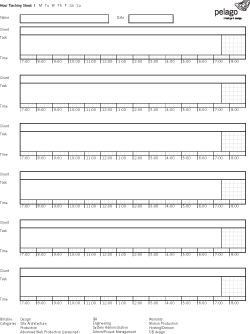Time tracking is a common dilemma for most small businesses that bill hourly for their time, or who need to account for employee time. One popular solution is to track time on paper timesheets. While this practice certainly does get people to track their time, it doesn’t do much more than that.

At Pelago, we used to track our time using a printable timesheet we designed. And we are not the only ones who have tried to solve this problem using paper timesheets. The Printable CEO Series has a beautifully designed task and time tracking sheet you can download and print out.
As practical as these timesheets may seem, they have one major shortfall. The data is useless unless you enter it into a format that can generate feedback. We spent years hand entering all of our timesheet data into Xcel, which ultimately gave us boxes of paper timesheets (talk about waste) and mostly-useless spreadsheet data.
The beauty of a system like Intervals is that our time tracking online is done in real-time. We don’t have to double enter our timesheets. And we’re tracking 30% more time while wasting zero sheets of paper. Now our data has usefulness because we can run productivity reports, generate invoices for billing, and keep a finger on the pulse of our business health.
Tracking time on paper was enough of a hindrance to us that we devoted time and money to developing Intervals. We’re hoping other businesses will want the same benefits of a web-based time clock. We’ve already done the heavy lifting of building Intervals; try it for free and take advantage of our business experience.